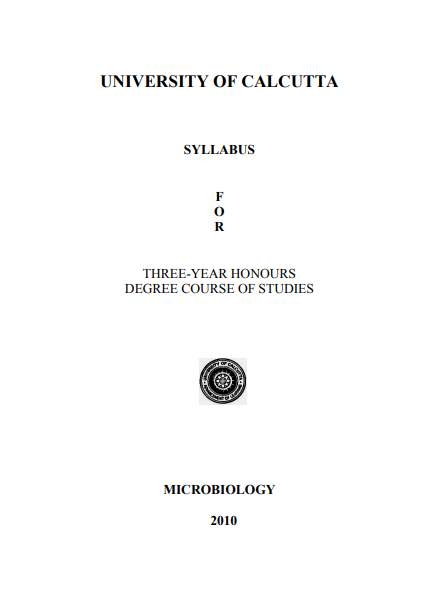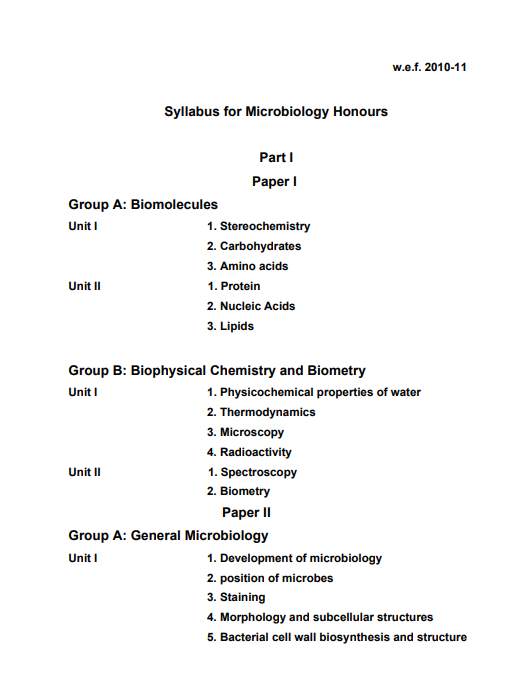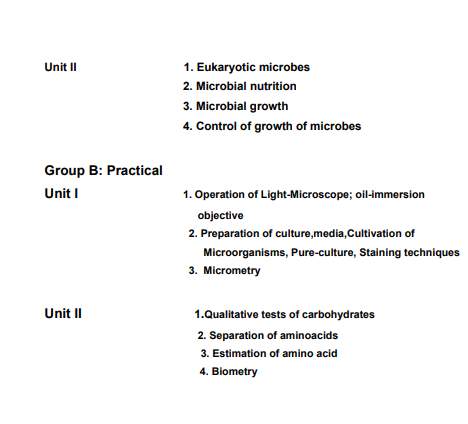|
#3
28th December 2019, 02:46 PM
| |||
| |||
| Re: Microbiology Question Papers Of Calcutta University
The syllabus for Three-Year Honours Degree Course - Microbiology Honours – offered by University of Calcutta on which the question paper is based is as follows: Paper I Group A: Biomolecules (50 marks) UNIT I 1. Stereochemistry: (15) General concepts on: Plane of symmetry, centre and axis of symmetry; Concepts of chirality; optical isomerism; geometrical isomerism; DL, RS nomenclature; Projection formula (Fischer & Howarth); Isomers: anomers, epimers. Stereochemistry of cyclohexane: idea of axial & equatorial bonds (related to chair form conformation), Important chemical reactions relating to configurations, Mutarotation and its mechanism. 2. Carbohydrates: (15) Definition, classification and structural concept of: Monosaccharides: Hexoses (only Glucose), Pentoses (Ribose, Ribulose, Xylose) Disaccharides: Sucrose, Lactose, Maltose Amino Sugars: Glucosamine, Muramic Acid Inversion (hydrolysis) of cane sugar. Chemical reactions of monosaccharides (glucose & fructose i.e., aldose and ketose) with HN03, Br2 - water, HI04, Phenylhydrazine. Principle of chemical estimation of sugar. Anomeric effect (Methylation effect). Polysaccharides: Chemical structure of Starch (αamylose, amylopectin), glycogen & cellulose. Smith degradation and enzymic hydrolosis of α-amylose & amylopectin. 3. Amino Acids: (10) Definition, classification, structure, stereochemistry of amino acids; Physico-chemical properties (Ionization & Biuret reaction) of amino acids. Amphoteric molecule, Zwitterion, pK values; Isoelectric point, Electrophoresis, Formol titration of Glycine (only reaction & principle). Reaction with Ninhydrin, FDNB, Dansyl & Dabsyl chloride, Fluorescamine, Van-slykes reaction. Reactions of carboxyl & amino groups. Synthesis of Glycine. Separation of amino acids by-Ion-exchange, Gel filtration, Paper Chromatography and Thin layer Chromatography. Peptides: peptide bond, biologically important peptides (glutathione, oxytocin-important functions). UNIT II 1.Proteins (15): Classification (Primary, Secondary, Tertiary, Quaternary- definition, examples) Forces that stabilize structure of proteins: H-bonds, hydrophobic interaction, electrostatic attraction, Van der Waal's interaction, dipole-dipole interaction. Types of proteins: i) Fibrous (α -helix, β - sheet, e.g. collagen): definition and structure. ii) Globular (Haemoglobin, Myoglobin): definition & examples. iii) Simple proteins and conjugated protein: definition & examples—physical denaturation and renaturation 2. Nucleic acid: (15) Purine, pyrimidine - definition and structure. Nucleoside, nucleotide: definition and structure. DNA & RNA: Double helical structure. A-DNA, B-DNA & Z-DNA (structure and differences). Chemical Properties: Hydrolysis (acid, alkali), enzymatic hydrolysis of DNA. General structure and types of RNA (tRNA, mRNA, rRNA). Viscosity, Buoyant density. Hyperchromic effect. Cot curve, Tm. 3.Lipids (10) Definition, nomenclature, classification - (simple, complex, derived lipids - structure & example) phospholipids, glycolipids, - (structure, composition); hydrolysis, saponification, saponification number, I2 number, acetylation, acetyl number, volatile fatty acid number - definition and related problems, Isomerism - cis-trans isomerism. Fatty acids: Saturated (palmitic acid, stearic acid), unsaturated (oleic acid): Structure of free fatty acids (example only). General chemical reaction of fatty acids - esterification. Hydrogenation and halogenations Suggested textbooks: 1.Finar, IL. Organic Chemistry, Part I and Part II. Syllabus for Three-Year Microbiology Honours University of Calcutta     |
